This content is restricted to subscribers
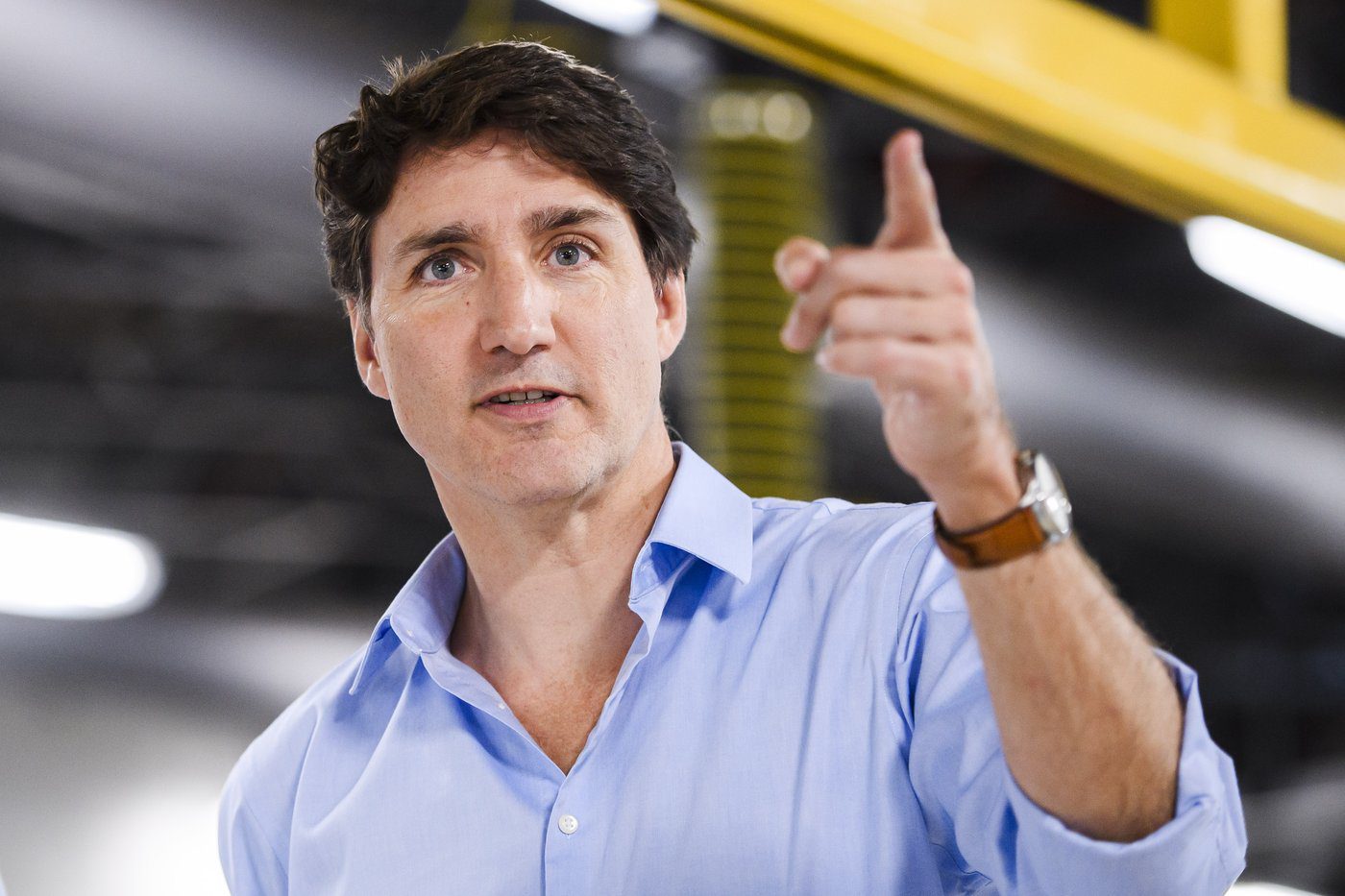
The views, opinions and positions expressed by columnists and contributors are the author’s alone. They do not inherently or expressly reflect the views, opinions and/or positions of our publication.

This content is restricted to subscribers
The views, opinions and positions expressed by columnists and contributors are the author’s alone. They do not inherently or expressly reflect the views, opinions and/or positions of our publication.

Opinion poll guru Éric Grenier has recently noted that PM Justin Trudeau is “in a deep polling hole.” And “few prime ministers have dug themselves out this far out from an election.”
Assume, in other words, that the National Post is wrong. An “enfeebled Trudeau” does not have “the NDP seriously reconsidering its support.”
As the March 2022 supply and confidence agreement between the Liberals and New Democrats broadly envisions, the next federal election in Canada probably will take place not quite two years from now, in the fall of 2025.
Yet, Mr. Grenier points out, even with this kind of contest, historically only two federal leaders with equally bad (or worse) polling numbers this far away have gone on to win the next election.
Both were Conservatives. The more recent is Brian Mulroney. His party was 15 points behind in 1986, but then won a majority of seats in the 1988 election. (Justin Trudeau is 14 points behind in 2023, awaiting an election in 2025 — again probably.)
Some 30 years before this, John Diefenbaker’s party in 1956 was 16 points behind, under George Drew. Then Dief succeeded Drew that December. And the Diefenbaker Progressive Conservatives won the biggest election victory in Canadian history in 1958.
Both the 1958 and 1988 federal elections had unusual features. Quebec Premier Maurice Duplessis gave an unexpected boost to Diefenbaker in 1958. The Canada-US Free Trade Agreement was the key issue in 1988!
The Justin Trudeau who has already won three consecutive federal elections in 2015, 2019, and 2021 (albeit with two minority governments), is swimming against the historical tide in another way as well. The last Canadian PM to win four elections in a row was Wilfrid Laurier in 1908.
At the same time, today’s calculations stressing points behind the poll leader may be misleading.
Consider the latest 338Canada polling projections. They give the Conservatives an almost astounding 205 seats (where 170 is a bare majority) in a federal election held now. But they still show the Liberals and NDP together with more of the cross-Canada popular vote (45%) than the Conservatives (40%).
Moreover, if you add the Greens and (say) about half the Bloc Québécois vote to the progressive equation, the current broadest quasi-governing group in parliament, intermittently identified with PM Justin Trudeau, would get 52% of the popular vote in a federal election held right now.
Similarly, Jagmeet Singh’s New Democrats did recently support Pierre Poilievre’s Conservative motion to exempt all home heating from the federal carbon tax. But this was only after NDP House leader Peter Julian pronounced the Poilievre pitch “clearly not a confidence motion.”
(And, as it happened, the NDP only voted for the Conservative motion after Bloc Québécois Leader Yves-François Blanchet had announced that his MPs would vote against it, alongside the Trudeau Liberals. The motion was finally defeated 186 to 135 in the House.)
In such ways the second Justin Trudeau Liberal minority government, supported on crucial supply and confidence votes by Jagmeet Singh’s New Democrats (and others), does at the moment seem to stand a reasonable chance of surviving until October 2025.
Very recently the prime minister looked very strong in the House as well, in a spirited early November exchange with Official Opposition Leader Poilievre, on divisiveness in Canadian politics. More of this could help Justin Trudeau overcome dissatisfaction inside his own party, and run as leader again in 2025 (as his plan still does seem to be).
If current polling trends carry on into 2024 and beyond, whenever the next federal election exactly happens the Poilievre Conservatives may finally win something like the 211 seats won by the Mulroney Conservatives in 1984. (When John Turner replaced Pierre Trudeau as Liberal leader.)
On the other hand, however inexact they may be as Liberal models of 2023 and 2025, the Diefenbaker Conservatives in 1956 and 1958, and the Mulroney Conservatives in 1986 and 1988, do show that coming back from polling holes even somewhat deeper than Justin Trudeau’s at the moment is not historically unprecedented.
Much stirring of political plots around the world is in the air right now — along with many unpredictable human calculations. What, just as an example, if the part of the female vote that lately seems to have abandoned PM Trudeau returns to the fold?
As Kaniz Supriya at the online Business Standard site explained this past summer, “Justin … is probably one of the most good-looking prime ministers in history.”
The views, opinions and positions expressed by columnists and contributors are the author’s alone. They do not inherently or expressly reflect the views, opinions and/or positions of our publication.
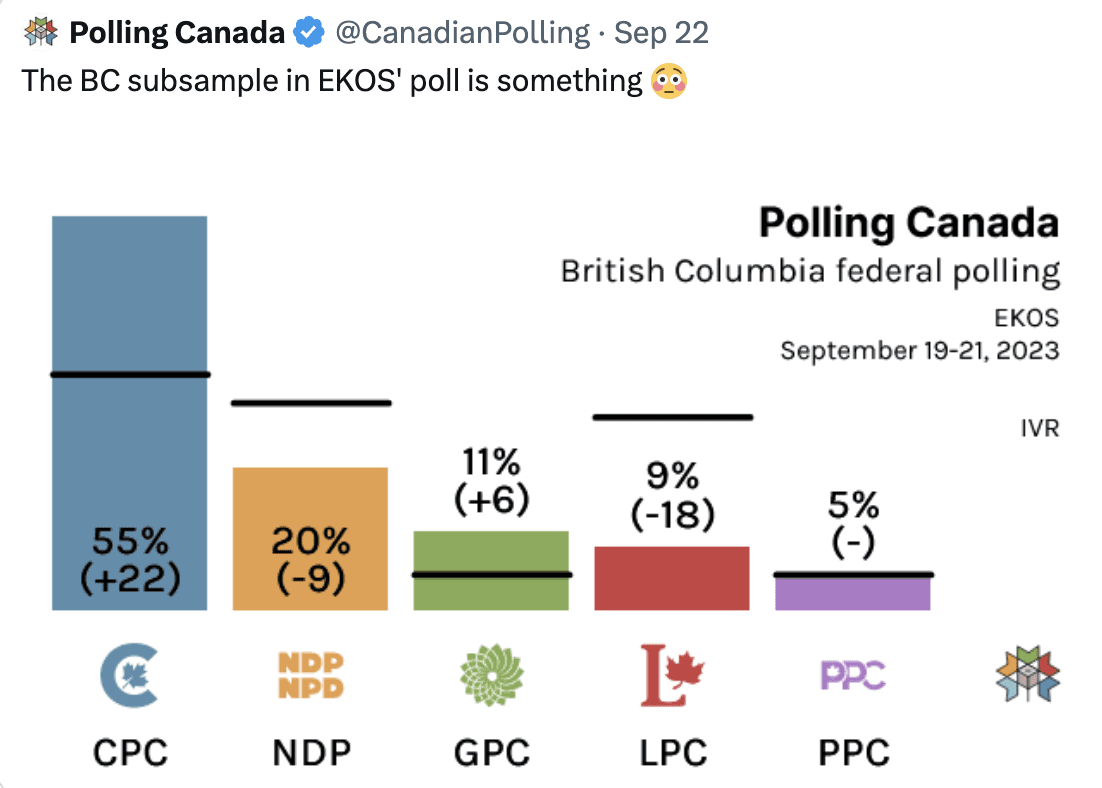
In Canada as elsewhere autumn 2023 is a strange political time on various fronts. And it is not always easy to know just what to make of various opinion polling anomalies.
Take the case of two late September Canada-wide polls, broken down for federal parties in the third most populous province of BC, between the vast Pacific Ocean and the Rocky Mountains.
On the evening of September 28 the almost always interesting Polling Canada tweeted the BC provincial results of an EKOS federal poll taken September 19–24. As in the country at large this showed the Conservative Party of Canada (CPC) well out in front, with a remarkable 53% of the provincial vote. The NDP had 22% and the Liberal Party of Canada (LPC) only 12%.
At almost the same time, in the early morning of the same day Polling Canada had tweeted the BC provincial results of a Leger federal poll taken September 22–24. This proposed a rather dramatically different BC provincial picture: LPC 32%, NDP 30%, and CPC.29%.
With the confidence and supply agreement between Justin Trudeau and Jagmeet Singh in mind (both of whom have particular BC connections), these Leger numbers could be read to suggest that the province sometimes known as British California may have now become a progressive bastion in Canada, broadly comparable to Gavin Newsom’s California in the USA.
What all this could suggest about BC seems especially striking when set beside the Ontario results of the same Leger federal poll taken September 22–24: CPC 45%, LPC 28%, NDP 18%.
These Leger Ontario numbers look more like the EKOS numbers for BC. Partisans of the BC EKOS poll raise methodological issues with the Leger poll. On Twitter (now X), Polling Canada offers a methodological note on its BC Leger poll: “Sample size = 141 Online.”
Several commenting tweets urge this size is just too small. Yet 141 would be BC’s approximate share of the Canada-wide population in a cross-country sample of 1,000 people. And the EKOS poll whose results Leger poll critics like better has a Canada-wide sample of 1,025.
Methodologically, Polling Canada just notes “IVR” on its BC EKOS poll. And veteran polling guru Allan Gregg has quietly criticized “the interactive voice response (IVR) surveys that bombard telephone numbers with recorded questions which, quite frankly, isn’t any more scientific than … trying to stop people … on a street corner.”
Finally, in the technical rating of Canadian federal pollsters proposed by physics and astrophysics professor Philippe J. Fournier’s 338Canada website EKOS gets B+ and Leger A+!
All this having been said, there does remain an obvious enough sense in which less than 150 observations is not a very good sample size for political opinion polling.
Yet the insurmountable general problem here is that cross-Canada samples large enough to provide seriously reliable regional results are prohibitively expensive. (The average country-wide sample size of the most recent half-dozen polls followed by 338Canada is 1,385!)
The typical smaller-number, less reliable regional samples in Canada-wide polls are sometimes intriguing — and even revealing. But regional inconsistencies in these cost-effective soundings of Canadian opinion at large are not unusual. It is almost always wise to treat regional results of cross-country polls with grains of well-seasoned salt.
All this having been said again, there remains some further support for the Leger poll’s Canadian bastion of progress on the Pacific coast in recent polling on BC provincial politics.
338Canada’s latest model of a BC election held now shows the NDP with 71 seats, BC United (old BC Liberals) 11 seats, Greens 3, and Conservatives 2. In the early autumn of 2023 the progressive NDP BC provincial government — under new leader David Eby, but in office since the spring of 2017 — is arguably in greater command of provincial politics than ever before.
(And, it is tempting to wonder, is this somehow related to the 2023 wildfires?)
The ultimate truth probably is that both the recent EKOS and Leger polls reflect different strands in the complex web of BC provincial and federal politics. Both clusters of regional opinion are out there in the wet coast air.
The big question for the near-enough future is no doubt which of the two rather different late September 2023 BC polling pictures will prevail in the next federal election on or before October 20, 2025— EKOS’s conservative dominance or Leger’s progressive bastion? The answer could have something to do with the futures of both Justin Trudeau and Jagmeet Singh.
The views, opinions and positions expressed by columnists and contributors are the author’s alone. They do not inherently or expressly reflect the views, opinions and/or positions of our publication.
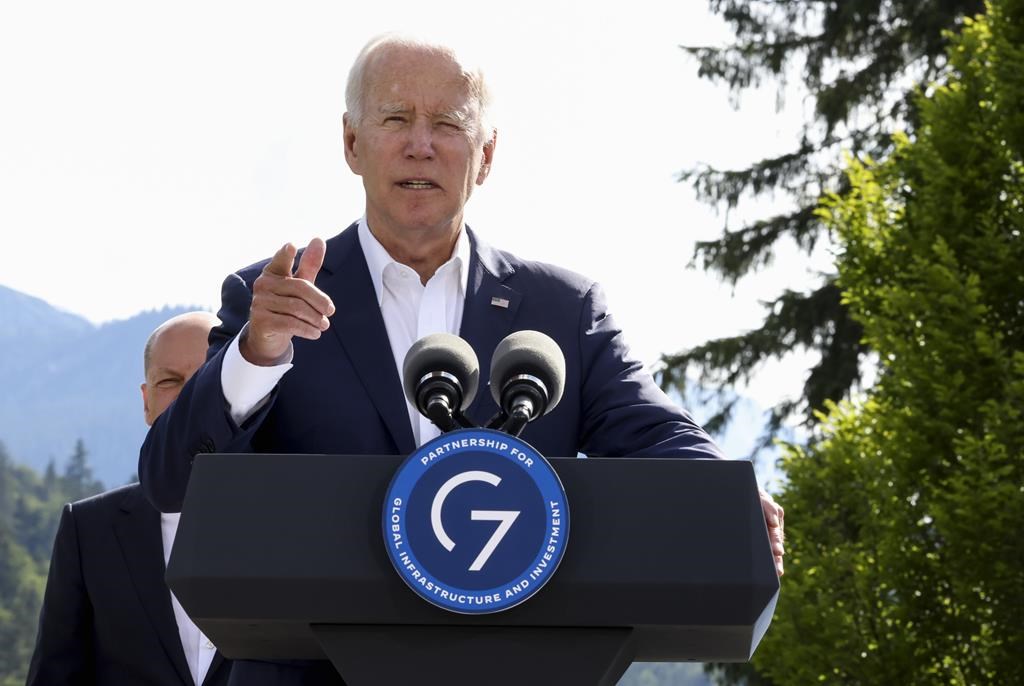
This content is restricted to subscribers
The views, opinions and positions expressed by columnists and contributors are the author’s alone. They do not inherently or expressly reflect the views, opinions and/or positions of our publication.
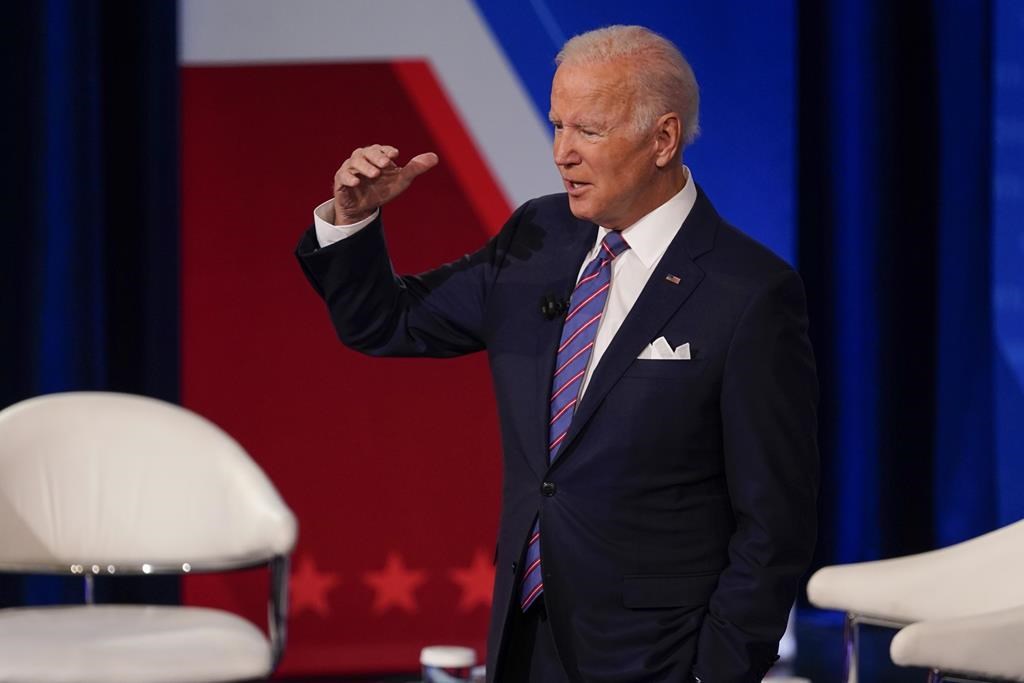
This content is restricted to subscribers
The views, opinions and positions expressed by columnists and contributors are the author’s alone. They do not inherently or expressly reflect the views, opinions and/or positions of our publication.
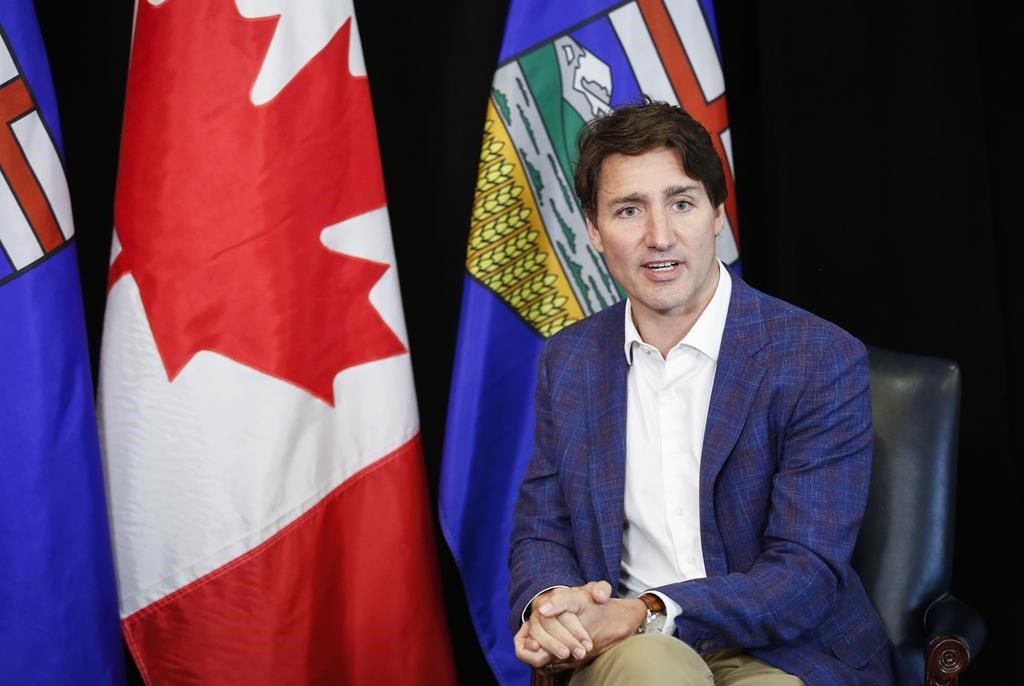
This content is restricted to subscribers
The views, opinions and positions expressed by columnists and contributors are the author’s alone. They do not inherently or expressly reflect the views, opinions and/or positions of our publication.